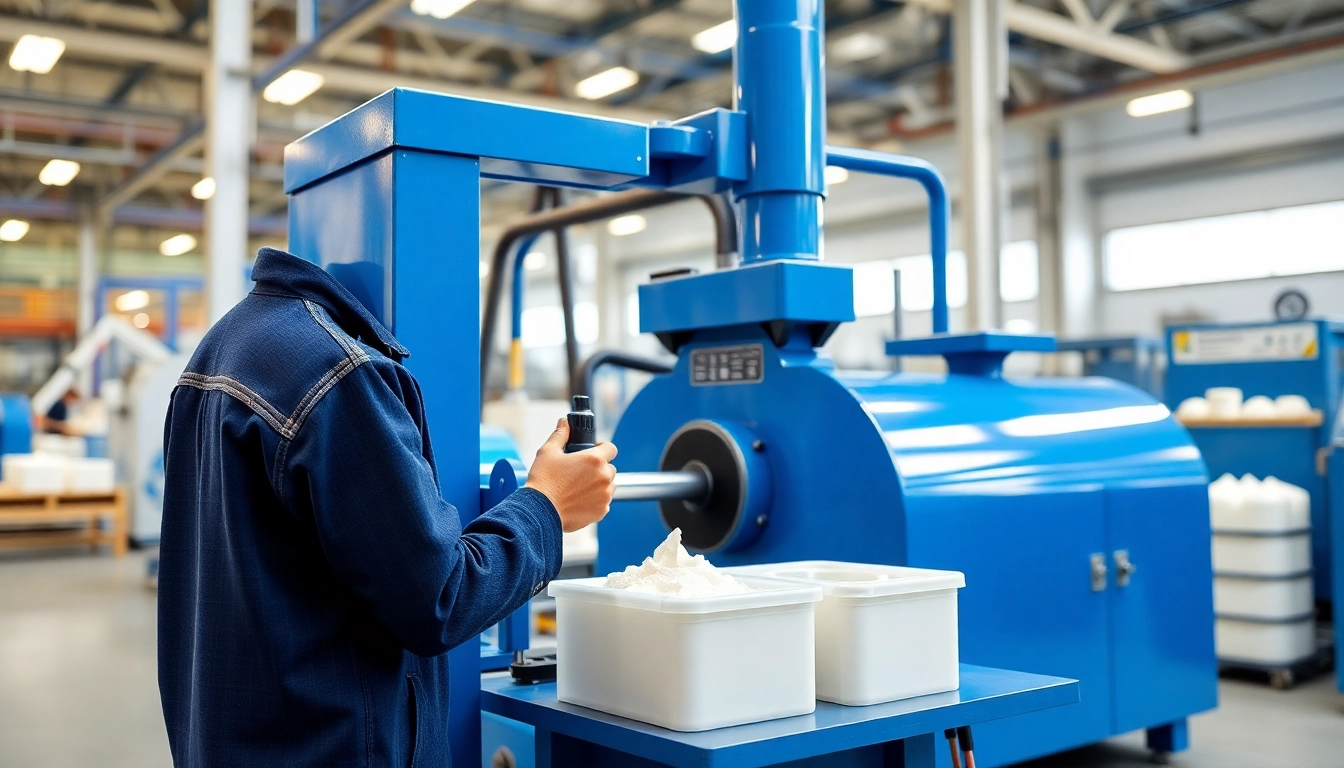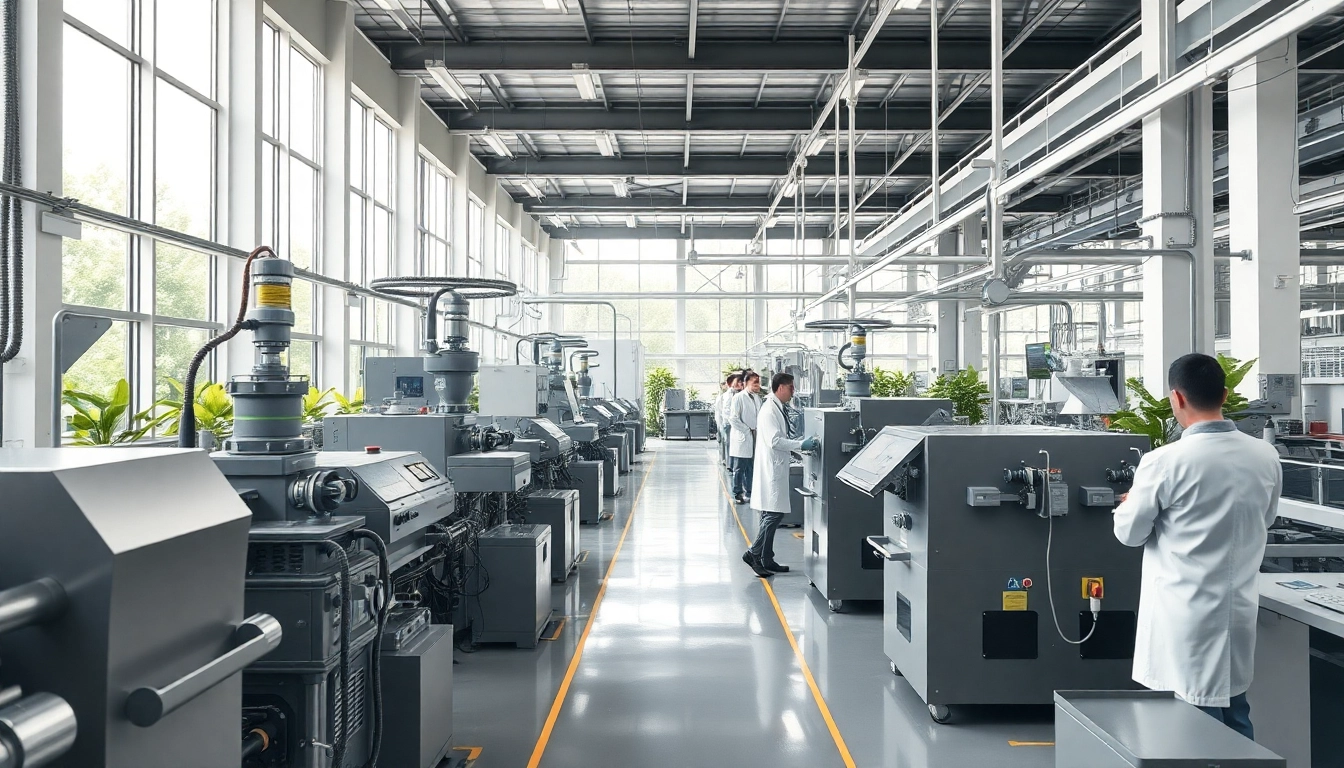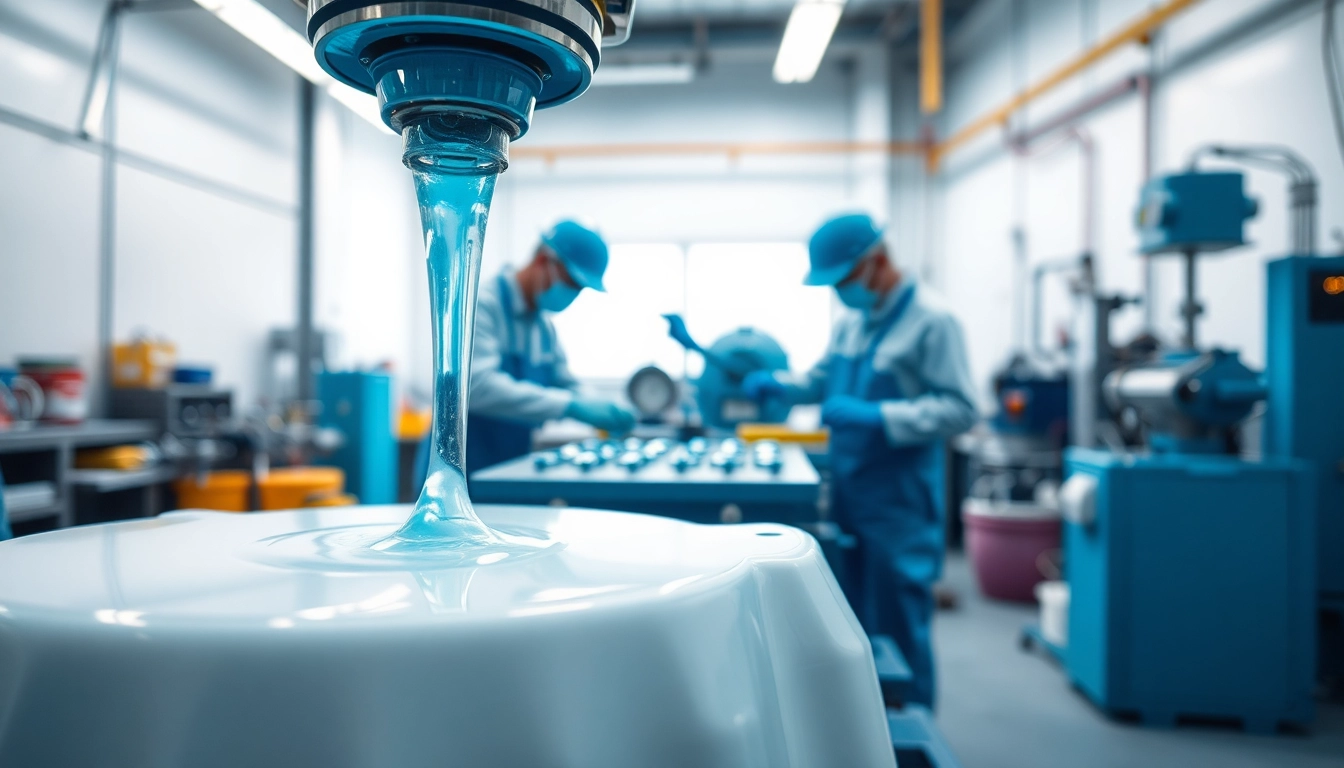Introduction to Blow Molding Machines
In the world of manufacturing, the Blow Molding Machine stands as a pivotal technology used across various sectors. Used primarily for producing hollow plastic parts, blow molding is a favored method due to its efficiency and versatility. Whether you are creating bottles, containers, or other specialized products, understanding blow molding machines can significantly enhance your production capabilities.
What is a Blow Molding Machine?
A blow molding machine is a piece of equipment designed to mold plastic materials into hollow shapes. The process begins with melting plastic in an extruder and shaping it into a parison (a tube-like structure). The parison is then placed into a mold where compressed air is used to expand it, forming it against the mold’s interior surfaces. This method allows for high-speed production and the creation of complex shapes with consistent quality.
Types of Blow Molding Machines
There are three primary types of blow molding machines:
- Extrusion Blow Molding (EBM): This type involves continuously extruding plastic to form a parison. EBM is commonly used for manufacturing bottles and containers.
- Injection Blow Molding (IBM): IBM combines elements of injection molding and blow molding. A preform is molded, followed by being blown into its final shape within the mold. This is ideal for high-precision applications.
- Stretch Blow Molding (SBM): This technique is typically used for producing PET bottles. In SBM, the preform is heated and then stretched while being blown into shape, leading to stronger and lighter containers.
Applications in Manufacturing
Blow molding machines are utilized in various industries, including:
- Cosmetics: For producing containers that hold lotions and creams.
- Food and Beverage: Primarily for bottle manufacturing, allowing for safe storage and transport of liquids.
- Pharmaceuticals: Creating specialized containers that meet strict regulatory standards.
- Consumer Goods: Manufacturing various everyday products including toys, household containers, and more.
Understanding the Blow Molding Process
Step-by-Step Overview
Understanding the blow molding process begins with recognizing its step-by-step methodology:
- Material Preparation: Plastic resin is first fed into the hopper where it is melted.
- Creating the Parison: The molten plastic is extruded into a tube-like structure called a parison.
- Blowing the Parison: The parison is placed in a mold, where compressed air is introduced to expand it to the shape of the mold.
- Cooling and Ejection: Once the plastic cools and solidifies, the mold opens to remove the finished product.
Common Techniques Used
There are several techniques that manufacturers might employ in the blow molding process, including:
- Single-Stage Process: Combining injection and blow molding into one machine, typically leading to improved efficiency.
- Multi-Layer Blow Molding: Allows multiple materials to be used in a single product, delivering better barrier properties.
- Mold Testing: Assessing mold performance with trial runs to optimize production quality.
Materials Suitable for Blow Molding
The materials most commonly used in blow molding include:
- Polyethylene (PE): Known for its lightweight and flexible properties.
- Polypropylene (PP): Offers higher heat resistance and is used for food containers.
- Polyethylene Terephthalate (PET): Typically used for making transparent bottles due to its excellent clarity and recycling capabilities.
- Polystyrene (PS): This lightweight material is often used for disposable products.
Benefits of Using Blow Molding Machines
Cost Efficiency and Production Speed
One of the primary advantages of blow molding machines is their cost-effectiveness. They are designed for rapid production, allowing manufacturers to produce large quantities in a short time. The initial cost of setting up a blow molding operation can be high, but the ability to produce hundreds of thousands of identical products efficiently offsets these costs over time.
Product Quality and Consistency
Blow molding machines ensure high-quality production with minimal variation between products. Automated systems can maintain tight tolerances and quality standards, which is critical for industries such as pharmaceuticals and food and beverage packaging, where uniformity is vital.
Environmental Impact and Sustainability
Modern blow molding techniques are environmentally friendly. Many machines support the use of recycled materials, reducing waste. Furthermore, the efficiency of blow molding processes minimizes energy consumption compared to traditional plastic manufacturing methods, aligning with global sustainability goals.
Choosing the Right Blow Molding Machine
Key Features to Consider
When selecting a blow molding machine, consider the following features:
- Machine Capacity: The output capacity should match your production needs.
- Energy Efficiency: Look for machines that minimize energy use while maintaining performance.
- Automation Level: Higher automation can enhance production speed and reduce labor costs.
- Maintenance Requirements: Machines that require less maintenance can lower long-term costs.
Comparison of Different Models
Comparison of different blow molding machines often depends on specific production requirements. For instance:
- For Small to Medium Production Runs: Consider using semi-automatic or manual machines.
- For Large Scale Production: Fully automatic machines are preferable due to their efficiency.
- For Specialized Products: Custom-built machines may be necessary to meet exact specifications.
Top Manufacturers and Brands
In the competitive market of blow molding machines, some key players include:
- Wilmington Machinery: Renowned for high-speed monolayer and multilayer machines.
- Parker: Known for its range of eco-friendly machines across multiple continents.
- Graham Engineering: Offers a comprehensive line focused on innovative solutions for plastic production.
Future Trends in Blow Molding Technology
Innovations and Advancements
The blow molding industry is undergoing significant innovations, driven by technological advancements. Future trends include:
- Smart Manufacturing: Integration of IoT devices for real-time monitoring and optimization of production processes.
- Increased Use of Recyclable Materials: Research into new materials that enhance sustainability in production.
- Advanced Automation: Further developments in robotic technology for more precise handling and manufacturing.
Market Trends and Demand Analysis
The demand for blow molded products is expected to rise, particularly in packaging and automotive sectors. Consumers increasingly favor lightweight and more sustainable packaging solutions, driving growth in blow molding technologies. Analysts project that the market will continue to expand as industries adapt to these evolving consumer preferences.
Planning for Future Production Needs
Planning for future production needs requires a thorough understanding of current market trends and technological advancements. Manufacturers should invest in flexible machinery that allows them to adapt to varying production demands and materials. By integrating predictive analytics, companies can also better anticipate shifts in demand, enabling them to optimize their production capabilities.




